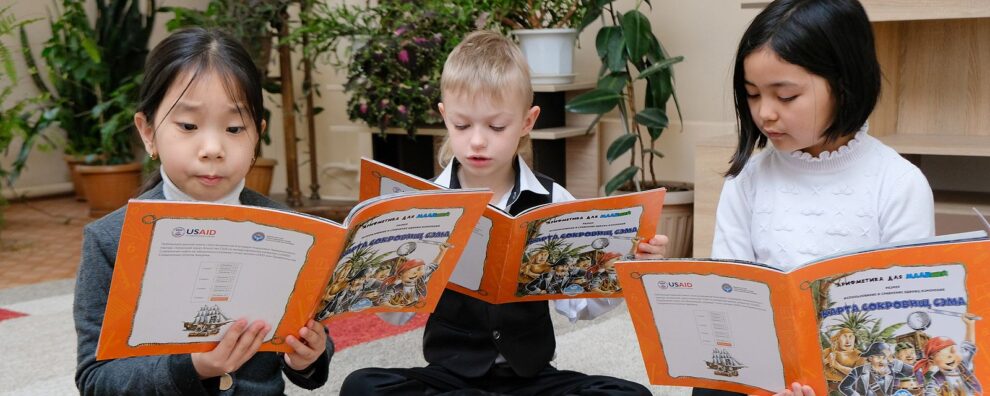During the final year of WFP’s Country Strategic Plan (CSP) 2018-2022, the people of the Kyrgyz Republic faced the negative impacts of the global food crisis and the escalation of violence along the Kyrgyz-Tajik border in September 2022, both of which exacerbated the stresses caused by the COVID-19 pandemic. Additionally, the fragile economy, rising food prices, and dependency on remittances from the Russian Federation have been further weakening the food system and threatening access to a nutritious diet, especially for low-income households. In August 2022, 21 percent of households, or 1.3 million people, were food-insecure and another 18 percent of households were not consuming an adequate diet.[1]
In 2022, WFP focused on i) strengthening national capacities to optimize the school meals programme, ii) informing shock-responsive and nutrition-sensitive social protection systems, and iii) enhancing gender-transformative disaster risk management and climate change adaptation systems. WFP delivered development assistance to meet the needs of 234,628 people, particularly in the most vulnerable rural and disaster-prone communities across the country. The CSP budget revision in July allowed WFP to address the increasing needs of social inpatient institutions and to expand capacity strengthening for national disaster risk management. WFP was also instrumental in contributing to the Government’s efforts to provide life-saving support to conflict-affected vulnerable people in Batken and Osh provinces.
Under Strategic Outcome 1, WFP supported an additional 49 schools and 6 social inpatient institutions to improve kitchen facilities, access to water and sanitation, and capacities to prepare nutrient-dense hot meals. On the policy level, the roles of government counterparts in the management of school meals were formalized. To date, over 70 percent of WFP-supported school meal programmes have been handed over to the Government to manage. Another milestone was the establishment of the Republican Competence Centre for the training of school cooks to promote nutritious diets.
Through Strategic Outcomes 2, 3, and 5, WFP provided food and cash assistance to people most vulnerable to food and nutrition insecurity, 49 percent of whom were women, through 948 community development projects aimed at enhancing livelihoods, increasing resilience to shocks and creating climate-resilient community assets. Under Strategic Outcome 2, two essential oil production workshops were established through an innovative public-private partnership model to build efficient agricultural value-added chains and reduce post-harvest losses. Under Strategic Outcome 3, a comprehensive assessment of the national disaster risk management system was conducted and shock-responsive microinsurance schemes have been initiated. In addition, WFP’s disaster monitoring and forecasting tool – Platform for Real-time Impact and Situation Monitoring (PRISM) – was introduced into the national system. These achievements have supported the shift of the Government’s system from recovery and response to prevention and mitigation of disaster risks. Under Strategic Outcome 5, as per the request by the Disaster Response Coordination Unit, WFP led the inter-agency rapid needs assessment and food security and logistics sectors and contributed to the implementation of the joint Government/UN Emergency Response Plan on the border conflict.
Under Strategic Outcome 4, WFP and development partners i) reviewed the existing social protection system to inform a comprehensive, nutrition-sensitive, and shock-responsive system, (ii) facilitated the Government’s efforts to digitalize the national registry of low-income families, and (iii) supported scaling up the Social Contract, a government programme to lift low-income families out of poverty. Additionally, WFP supported the development of the National Food Security and Nutrition Programme 2023-2027 and the Government’s plan to implement the disaster risk reduction strategy. Given the impacts of the Ukraine conflict and the global food crisis, WFP increased the frequency of food price monitoring and introduced bimonthly food security and vulnerability monitoring in the field. WFP and partners also carried out Fill the Nutrient Gap and the Cost of the Diet Analysis to inform on the availability, cost, and affordability of nutritious diet and contributed to the National Integrated Micronutrient and Anthropometric Survey to assess the severity of micronutrient deficiencies and nutrition status of the population.
WFP developed a new Country Strategic Plan for 2023-2027 in line with national priorities and extended the Memorandum of Understanding with the Government to implement the new CSP. WFP also contributed to the development of the United Nations Sustainable Development Cooperating Framework 2023-2027 (UNSDCF) and ensured the new CSP derivation from UNSDCF.
Source: Reliefweb















